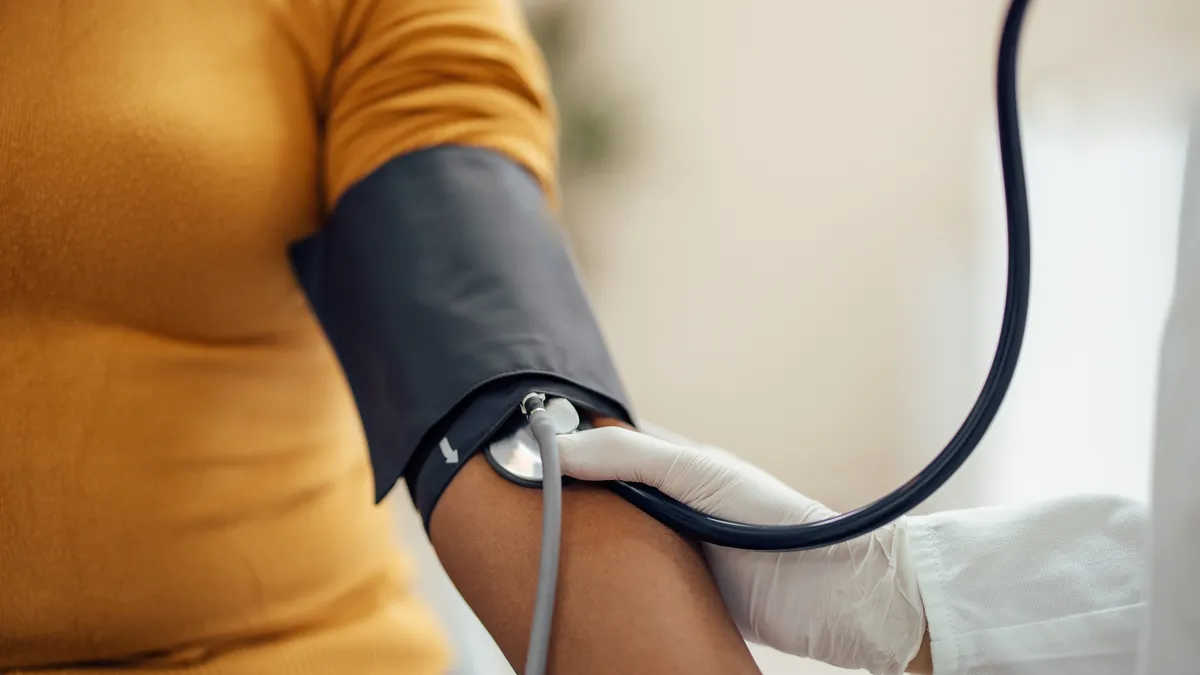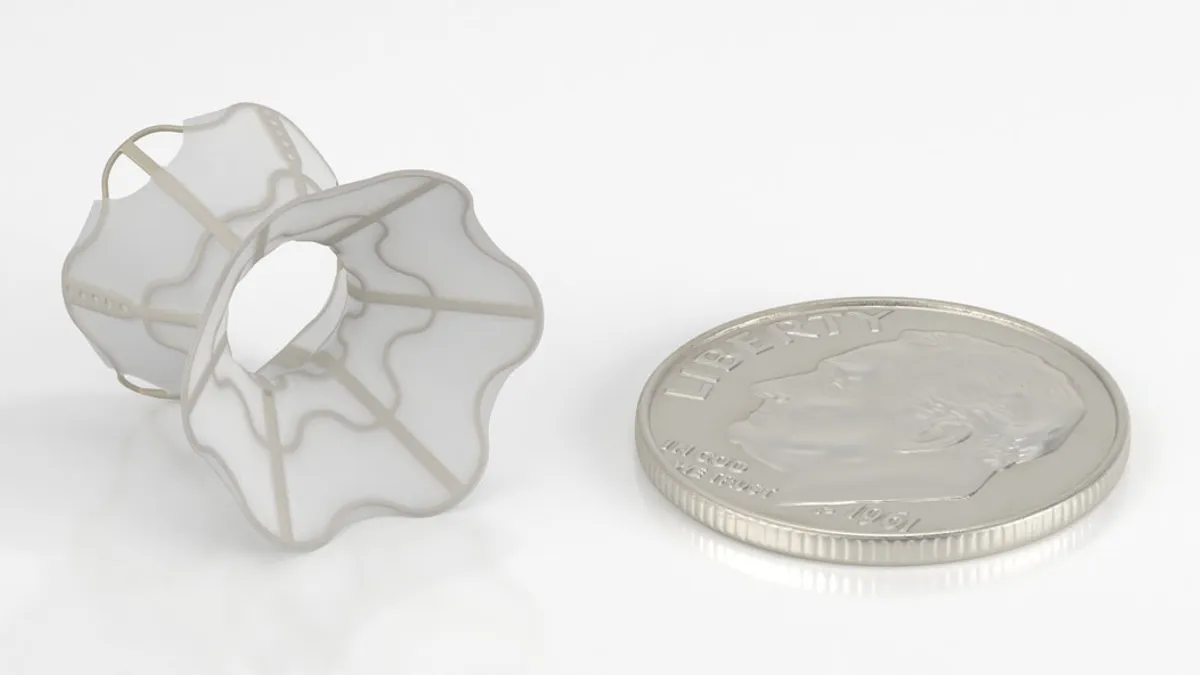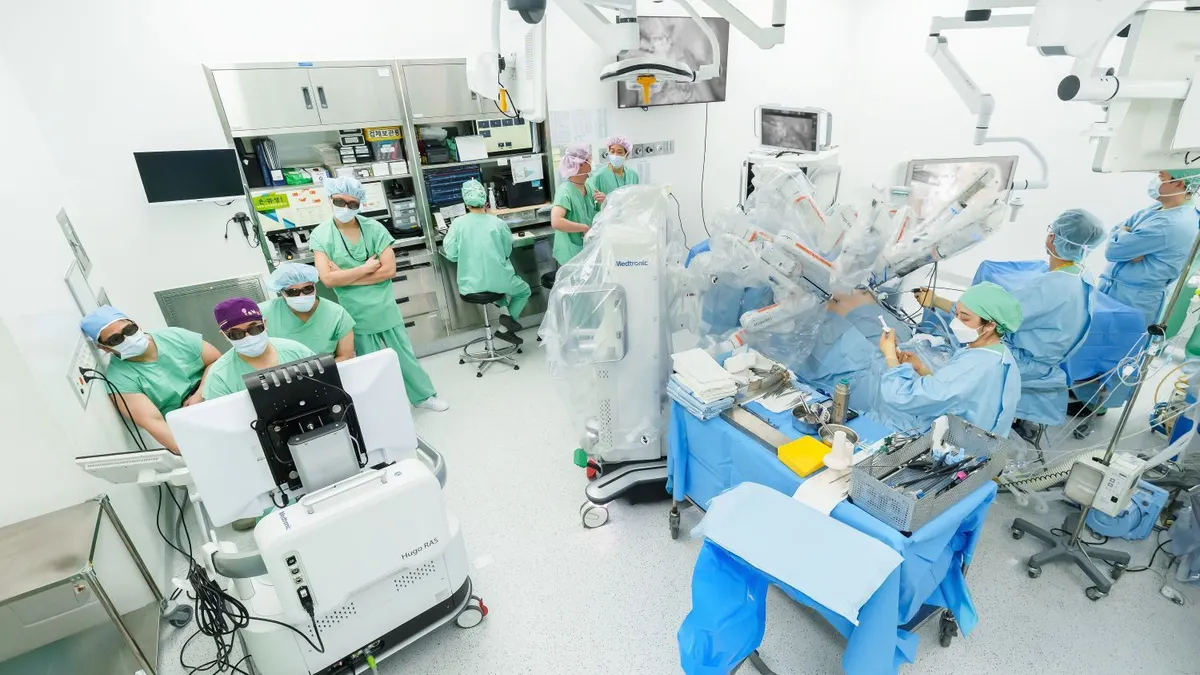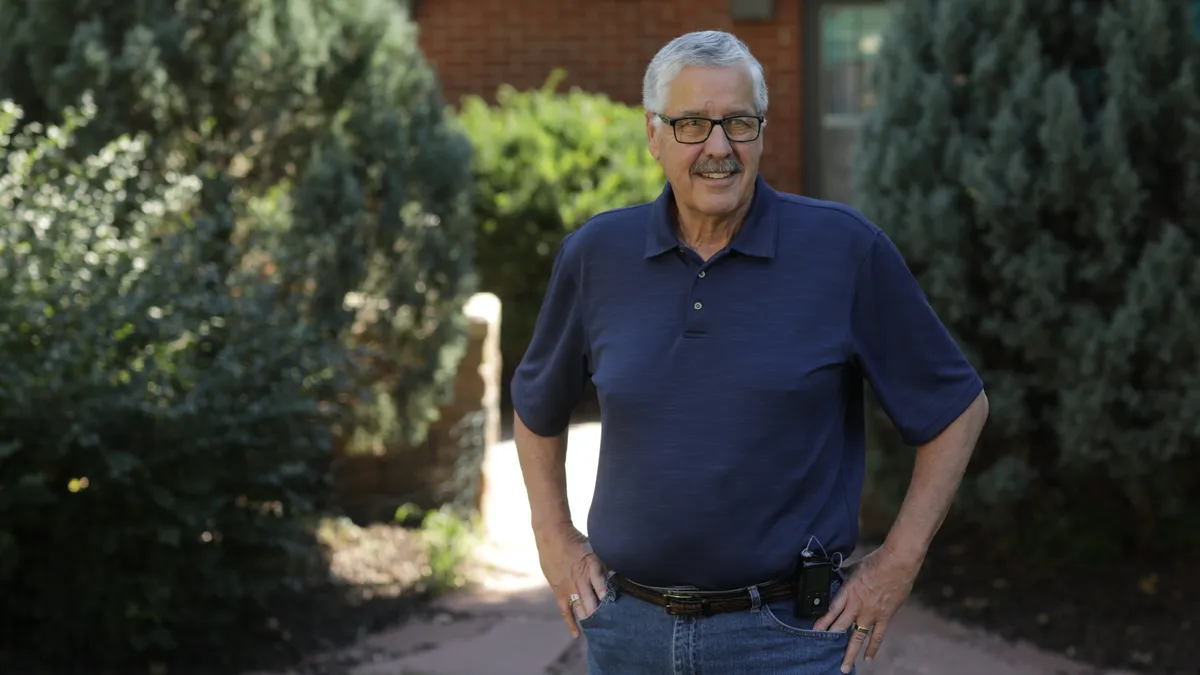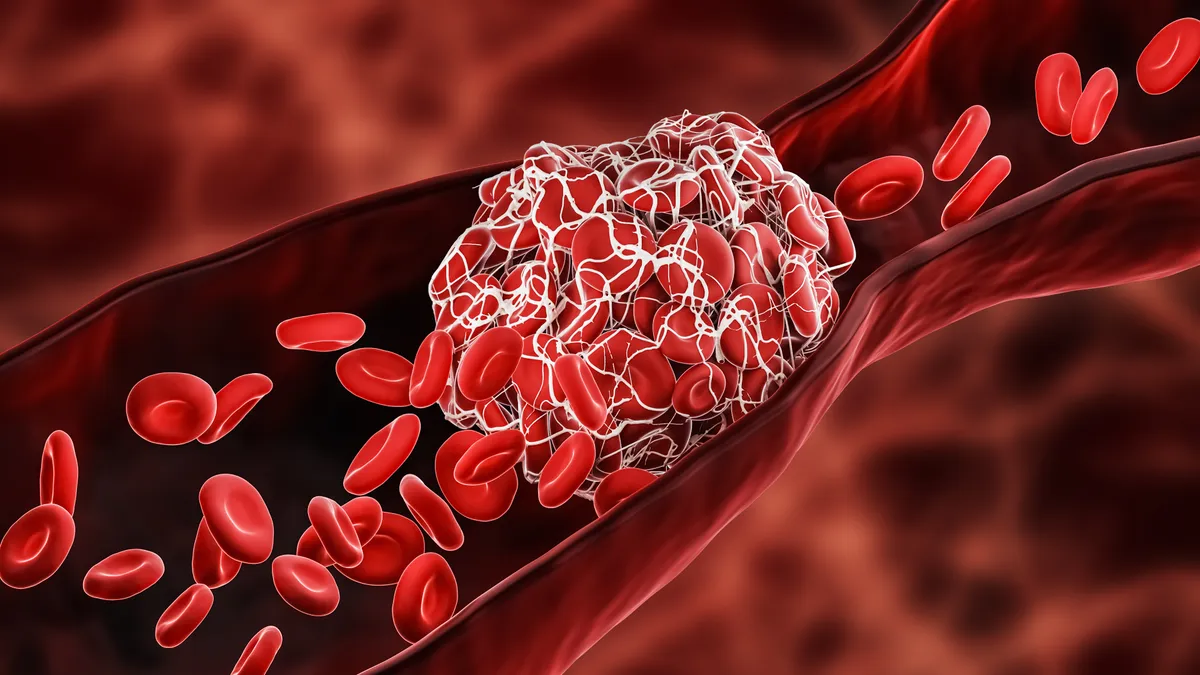Diabetes tech startup Biolinq received the green light from the Food and Drug Administration to start marketing its first glucose sensor.
The device, called Biolinq Shine, is currently intended for people with Type 2 diabetes, although Biolinq hopes to extend it to people with Type 1. It also has some different design features than continuous glucose monitors on the market today: It has a built-in indicator, which changes color to show users if they are at, above or below their target range, and the sensor sits in the skin, instead of being inserted just below the skin.
MedTech Dive caught up with chief technology officer and co-founder Jared Tangney to learn more about Biolinq’s technology and what’s next with its CGM launch.
This interview has been edited for length and clarity.
MEDTECH DIVE: What’s the story behind how Biolinq got started?
JARED TANGNEY: I co-founded Biolinq back in 2012. My co-founder, Josh, and I met in grad school at UC San Diego. I was getting a PhD in Biomedical Engineering, and had an interest in combining medical technology with some of the consumer aspects of wearables. There was a technology there that was very unique, and this was basically the ability to measure a wide variety of different biomarkers in the skin using this micro-sensor technology. We ended up licensing a few patents from the university and started the company.
What encouraged us to focus in this area was diabetes technology has just absolutely changed the way people with diabetes live. The quality of life for somebody with diabetes today versus 50 years ago is just amazing. It's obviously still a really difficult thing for people to deal with, but it has just improved the quality of life for people in so many ways.
When we were looking at the evolution of sensing, while the form factor has improved, the electronics have gotten smaller over time, the actual fundamental way that we do sensing has not changed. It uses this needle introducer, and is still relatively invasive. We discovered that you can sense in the skin, and the skin is actually a really good place for doing sensing.
What makes the skin a good place for sensing?
There's been quite a bit of research showing that if you do drug delivery into the skin, it’s absorbed by the body very quickly. The reason for that is there’s this capillary bed that’s right within the skin. The same theory should apply, you should be able to measure things as they change very quickly in the skin.
The challenge was building sensors small enough to measure in the skin. We leveraged semiconductor processes in silicon, which is a very strong material, to build these tiny microsensors that go just a fraction of a millimeter into the skin. You've got a really good location for doing sensing, but also a really good user experience, because there's no introducer needle, no blood, no pain.
Also the goal was, there are so many other super interesting markers that we should be measuring that we're just not today. And so we built this as an array of multiple sensors on one patch. We're doing glucose today, but the vision from day one has always been to do much, much more.
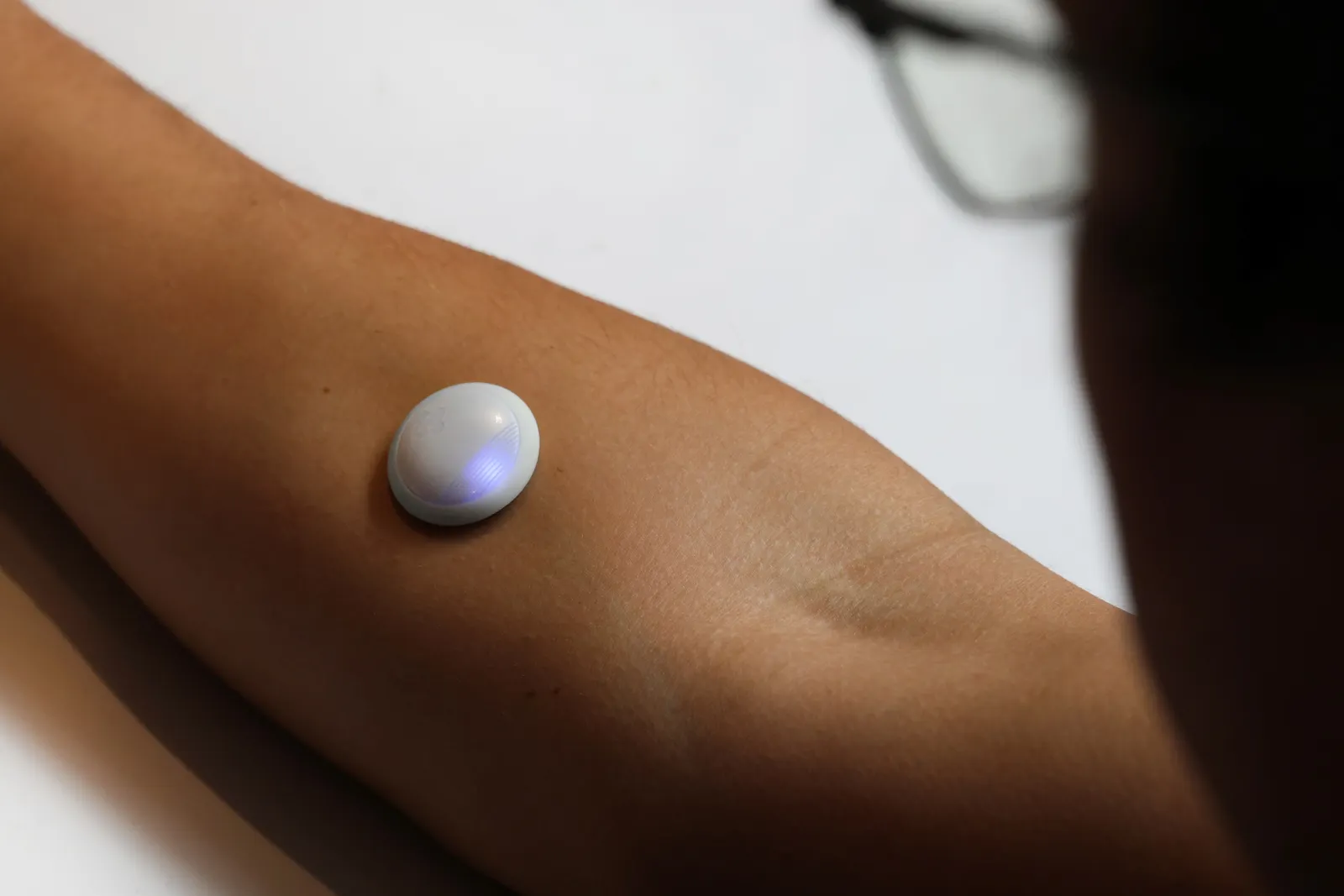
How does that mechanism compare to traditional CGMs?
We're usually at least about 20 times more shallow than a traditional CGM. So traditional CGMs [are inserted] in the five to 10 millimeter range. We're about .2 millimeters, so much more shallow than a traditional CGM.
With a traditional CGM, you're measuring interstitial fluid that's down in the adipose tissue, in the fat, right? So we are also measuring interstitial fluid, but instead of in fat, we're in the skin. That's the key differentiator.
We do pick up changes in glucose quite a bit more quickly than you would down in this subcutaneous tissue.
Right now, your device is indicated for Type 2 diabetes. How did you decide to start with Type 2?
Our plan is to eventually serve all people with diabetes and beyond. But we really felt that, if you look at traditional CGM, it was designed for people with Type 1 diabetes.
Over 90% of people with diabetes have Type 2 diabetes, and the majority of those are not on insulin. There are now CGMs that are over the counter and starting to market more at this population. But our feeling is that it's more of a rebranding of something that was designed for people with Type 1.
Our goal was, let's really make this process not intimidating. It's either intimidating because you have this needle inserter, or it's intimidating because it's a ton of information being thrown at you that you don't really know what to do with, and so we really simplified that down.
We have an LED indicator on the wearable itself. And because we're measuring in the skin, you can wear it on the forearm. You can look down and say, if my light is showing blue, then I'm in the normal range. I can move on with my day. If I see yellow, that means my glucose levels are high and I should do something, or maybe it’s a learning experience.
There is an app. You can scan the device [and] get additional, more granular information, but you don't need to feel tethered to a phone.
Is there also an indicator for hypoglycemia?
Yeah, we added a red light. So if somebody does go low, you can see that. If you're not on insulin, it is pretty rare to go dangerously low, but it can happen. So it's something we wanted to make sure that we added as well.
You mentioned an interest in adding other biomarkers besides glucose. What else are you looking at?
The one we first published on outside of glucose was lactate. The better known [application] is for athletes and for performance monitoring. From a technical perspective, it’s one of the easier ones for us to do because there is an enzyme that can be used for measuring lactate, just like glucose.
Because we have this array, we can actually do multiple analytes on the same wearable, and we've already shown that we can do glucose and lactate on the same patch. That combination of the two is going to be really interesting for not just athletes, but for looking at how your metabolic health is changing.
Now, there are only a handful of different enzymes that are commercially available for monitoring different biomarkers, and most of them aren't super interesting. We designed a new approach to sensing using aptamers. Aptamers are basically a single strand of DNA, or sometimes RNA — very short segments that can bind to target molecules of interest.
For example, we had a project funded by the [Department of Defense] looking at cortisol. We've been getting a lot of interest on that one. An additional marker that we’ve published on is phenylalanine. It’s an amino acid that’s present in pretty much every protein source that we consume. We really think of it as a sensor for monitoring protein intake and also muscle breakdown.
Now that you have de novo authorization, what’s next for launching your CGM?
We are in the process of getting things ready for commercialization, and we'll be disclosing more in the coming weeks and months on timing. Our ultimate goal is to get this out into the world as soon as we can. We’re in the process of scaling up manufacturing and ultimately bringing it to the market.




